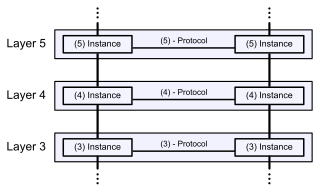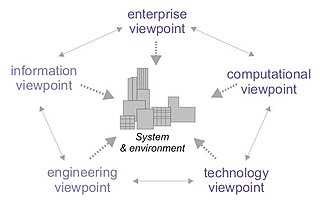Background
The model was first proposed, developed and implemented by Sensorica affiliates. Sensorica was created in February 2011. Initially, the model evolved from the Discovery Network model proposed by Sensorica's co-founder, Tibi between, 2008 and 2010. Between 2011 and 2012, the model drew from the work of Verna Allee, Yochai Benkler, Michel Bauwens, Clay Shirky, and others. After the summer of 2012, the network resource planning and contribution accounting system (NRP-CAS) was influenced by Bob Haugen, who has been developing enterprise resource planning systems (ERP) since 1995. From May 2013 to May 2014, Yasir worked on a framework for open value network in collaboration with other Sensorica affiliates. The OVN model was extended to network of networks, in the context of the Open Alliance initiative also led by Sensorica, an attempt to federate fablabs and makerspaces in Montreal, Canada.
The OVN work has input directly into international ISO standards development, namely, ISO/IEC 15944-15 "Information technology - Business Operational View - Part 15: Open Value Networks(OVN): Integrated perspective on Open-edi, eBusiness, blockchain and distributed transactions". The lead international ISO Project Editor : Prof. William McCarthy, with Jake Knoppers as one of two Co-Project Editors. The international ISO standards committee responsible here is ISO/IEC JTC1/SC32/WG1 (where JTC1 = Joint ISO, IEC = Technical Committee on Information technology, SC = Data Management & Interchange, WG1 = eBusiness)

The International Organization for Standardization is an independent, non-governmental, international standard development organization composed of representatives from the national standards organizations of member countries. Membership requirements are given in Article 3 of the ISO Statutes.

The Open Systems Interconnection (OSI) model is a reference model from the International Organization for Standardization (ISO) that "provides a common basis for the coordination of standards development for the purpose of systems interconnection." In the OSI reference model, the communications between systems are split into seven different abstraction layers: Physical, Data Link, Network, Transport, Session, Presentation, and Application.
MPEG-7 is a multimedia content description standard. It was standardized in ISO/IEC 15938. This description will be associated with the content itself, to allow fast and efficient searching for material that is of interest to the user. MPEG-7 is formally called Multimedia Content Description Interface. Thus, it is not a standard which deals with the actual encoding of moving pictures and audio, like MPEG-1, MPEG-2 and MPEG-4. It uses XML to store metadata, and can be attached to timecode in order to tag particular events, or synchronise lyrics to a song, for example.
A distributed control system (DCS) is a computerized control system for a process or plant usually with many control loops, in which autonomous controllers are distributed throughout the system, but there is no central operator supervisory control. This is in contrast to systems that use centralized controllers; either discrete controllers located at a central control room or within a central computer. The DCS concept increases reliability and reduces installation costs by localizing control functions near the process plant, with remote monitoring and supervision.
Computer Graphics Metafile (CGM) is a free and open international standard file format for 2D vector graphics, raster graphics, and text, and is defined by ISO/IEC 8632.
FCAPS is the ISO Telecommunications Management Network model and framework for network management. FCAPS is an acronym for fault, configuration, accounting, performance, security, the management categories into which the ISO model defines network management tasks. In non-billing organizations accounting is sometimes replaced with administration.
Digital storage media command and control (DSM-CC) is a toolkit for developing control channels associated with MPEG-1 and MPEG-2 streams. It is defined in part 6 of the MPEG-2 standard and uses a client/server model connected via an underlying network.
The Open Systems Interconnection protocols are a family of information exchange standards developed jointly by the ISO and the ITU-T. The standardization process began in 1977.
In the context of software engineering, software quality refers to two related but distinct notions:
IEC 61850 is an international standard defining communication protocols for intelligent electronic devices at electrical substations. It is a part of the International Electrotechnical Commission's (IEC) Technical Committee 57 reference architecture for electric power systems. The abstract data models defined in IEC 61850 can be mapped to a number of protocols. Current mappings in the standard are to Manufacturing Message Specification (MMS), GOOSE [see section 3, Terms and definitions, term 3.65 on page 14], SV or SMV, and soon to web services. In the previous version of the standard, GOOSE stood for "Generic Object Oriented Substation Event", but this old definition is still very common in IEC 61850 documentation. These protocols can run over TCP/IP networks or substation LANs using high speed switched Ethernet to obtain the necessary response times below four milliseconds for protective relaying.

An enterprise architecture framework defines how to create and use an enterprise architecture. An architecture framework provides principles and practices for creating and using the architecture description of a system. It structures architects' thinking by dividing the architecture description into domains, layers, or views, and offers models – typically matrices and diagrams – for documenting each view. This allows for making systemic design decisions on all the components of the system and making long-term decisions around new design requirements, sustainability, and support.

Reference Model of Open Distributed Processing (RM-ODP) is a reference model in computer science, which provides a co-ordinating framework for the standardization of open distributed processing (ODP). It supports distribution, interworking, platform and technology independence, and portability, together with an enterprise architecture framework for the specification of ODP systems.
ISO/IEC JTC 1, entitled "Information technology", is a joint technical committee (JTC) of the International Organization for Standardization (ISO) and the International Electrotechnical Commission (IEC). Its purpose is to develop, maintain and promote standards in the fields of information and communications technology (ICT).
ISO/IEC JTC 1/SC 27 Information security, cybersecurity and privacy protection is a standardization subcommittee of the Joint Technical Committee ISO/IEC JTC 1 of the International Organization for Standardization (ISO) and the International Electrotechnical Commission (IEC). ISO/IEC JTC 1/SC 27 develops International Standards, Technical Reports, and Technical Specifications within the field of information security. Standardization activity by this subcommittee includes general methods, management system requirements, techniques and guidelines to address information security, cybersecurity and privacy. Drafts of International Standards by ISO/IEC JTC 1 or any of its subcommittees are sent out to participating national standardization bodies for ballot, comments and contributions. Publication as an ISO/IEC International Standard requires approval by a minimum of 75% of the national bodies casting a vote. The international secretariat of ISO/IEC JTC 1/SC 27 is the Deutsches Institut für Normung (DIN) located in Germany.
CISC Semiconductor GmbH defines itself as “a design and consulting service company for industries developing embedded microelectronic systems with extremely short Time-To-Market cycles.” The company started in 1999, working in the semiconductor industry, but soon expanded its field towards the automotive branch and further extended business towards the radio frequency technology (RFID) sector in 2003. Since then, CISC gained significant experience and expertise in RFID, developing an own business segment and highly sensitive measurement equipment to test and verify RFID systems for different industries. Representatives of CISC Semiconductor are actively working on and contributing to worldwide standardization of future technologies like RFID, in different standardization organizations. This effort brings CISC into the position of being a leader in research and development, and thus being able to be “one step ahead of innovation”. As of 2011 CISC Semiconductor was in a globally leading standardization position for RFID testing by providing the convener of ISO/IEC JTC1 WG4/SG6 on “RFID performance and conformance test methods“, as well as GS1 EPCglobal co-chairs for performance and conformance tests.
A blockchain is a distributed ledger with growing lists of records (blocks) that are securely linked together via cryptographic hashes. Each block contains a cryptographic hash of the previous block, a timestamp, and transaction data. Since each block contains information about the previous block, they effectively form a chain, with each additional block linking to the ones before it. Consequently, blockchain transactions are irreversible in that, once they are recorded, the data in any given block cannot be altered retroactively without altering all subsequent blocks.
Sensorica is an open value network (OVN), established in 2011 in Montreal, Canada, for open source hardware development. It is a pilot project for commons-based peer production applied to hardware, designed to operate at large scale.



